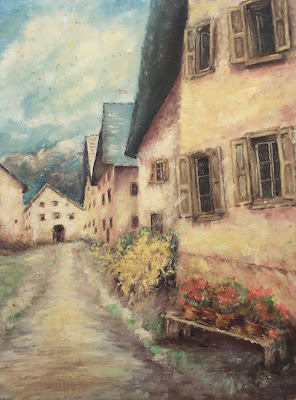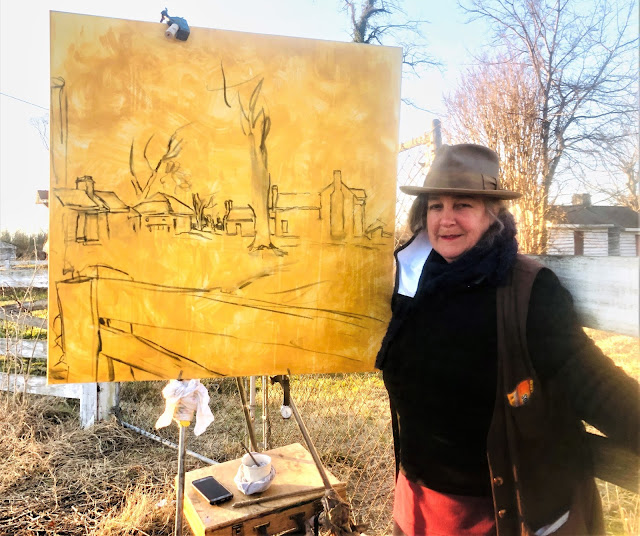 |
ABOVE: A document in Valentine Rau's widow's pension file notes his date of death and more. BELOW: A note to Rau's widow on reverse of above document.
(National Archives via fold3.com.) |
Like this blog on Facebook | Follow me on TwitterHere's how these two documents in the National Archives can open the door to the story of this Battle of Nashville casualty:
On Dec. 16, 1864, 72nd Ohio Private Valentine Rau of Company C was wounded on the second (and final) day of the battle. The 26-year-old soldier, a native of Germany, was shot in the right side, according to Document 1 (above top). We can presume Valentine was originally treated at a hospital in Nashville -- war-time records can identify which one -- and then sent to Jefferson General Hospital in Jeffersonville, Ind.
A brief search online reveals much information (including an illustration) about Jefferson General Hospital. Built to replace another hospital at nearby Camp Joe Holt, it was one of the largest U.S. Army hospitals of the war. Jefferson General Hospital consisted of 27 buildings, each 175 x 20 feet. Each ward had four large cast-iron stoves. Inside the perimeter was a chapel with reading rooms, a post office, a drug and instrument house, and a "dead house" -- a morgue for temporary keeping of the dead.
 |
Jefferson General Hospital was one of the largest U.S. Army hospitals during the war.
(Wikimapia.org.) |
By February 1865, Rau -- whose name apparently was anglicized in these documents to "Rowe" -- had taken a turn for the worse. He died on Feb. 8, 1865. L.G. Olmstead filled out the front of Document 1, noting Rau died in the morning in Ward 1 and that the soldier's wife, Susan, lived in Sandusky, Ohio. On the reverse of the document, E.S Ballard wrote to Rau's widow:
"I send this to give you information concerning the death of Mr. Valentine Rowe. But as I am informed that the particulars have already been written by his lady nurse I will not multiply the words."
(The identity of Ballard could be revealed with further research.)
A quick search online reveals Olmstead was a Presbyterian minister of some renown in Indiana. Document 2 (shown) -- the reverse of Document 1 -- also included the name "C.W. Fitch," another chaplain.
According "Baird's History of Clark County, Indiana," published in 1909: Fitch and Olmstead were "men of great heart as well as brain. Chaplain Olmstead being a great lover of flowers was responsible for adding materially to the beauty and attractiveness of the grounds [of Jefferson Hospital] by planting many trees and flower beds to cheer the homesick sufferers."
According to Document 1, Rau's funeral was held at 3 p.m. on Feb. 8, 1865. He was buried nearby, probably at a hospital cemetery -- further research could uncover where. According to Find A Grave -- an excellent online research tool -- Rau's remains rest today in the national cemetery in New Albany, Ind.
Information in these documents -- "bread crumbs," I call them -- could lead to much more about the life and death of Valentine Rau. For example:
- Because we have his wife's name, more info on the Rau family could easily be found on ancestry.com. Perhaps even an image of the couple.
- A deeper dive of the county history could uncover an image of Olmstead. (Obscure county, town, etc. history are digitized on archive.org, a fabulous resource.)
- Records from the hospital where Rau was treated could lead to the identity of the "lady nurse" who treated him and more.
- The identity of Rau's regiment could open many doors -- exactly where the regiment fought at Nashville, for example. A speech about the regiment, given in 1875 by a 72nd Ohio officer, is available online here. Perhaps he mentioned Rau.
Information available on the Internet -- thanks, Al Gore! -- makes the searching/digging infinitely easier than it was decades ago. Enjoy the "digging."
-- Have something to add (or correct) in this post? E-mail me here.
SOURCES
-- Documents from Rau widow’s pension file, National Archives via
fold3.com, a pay site.








